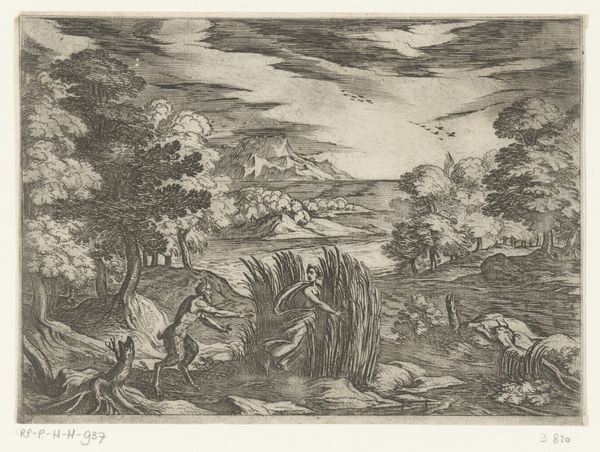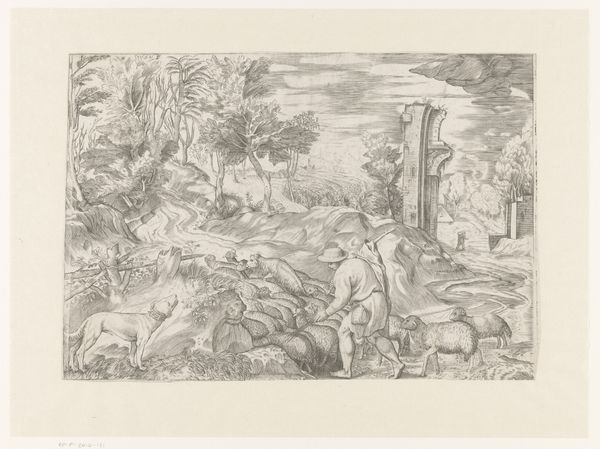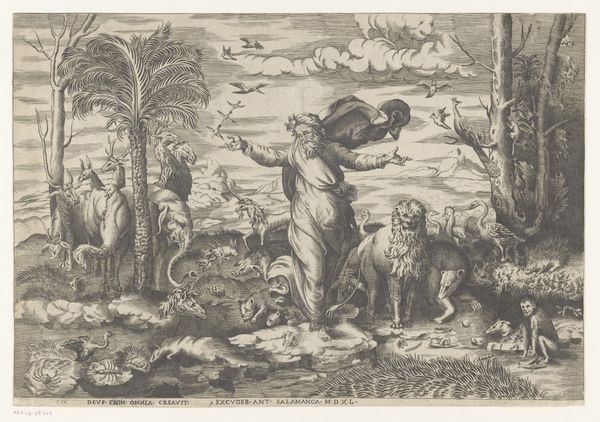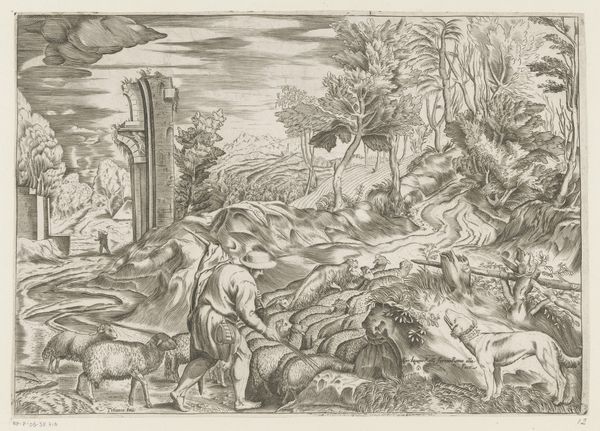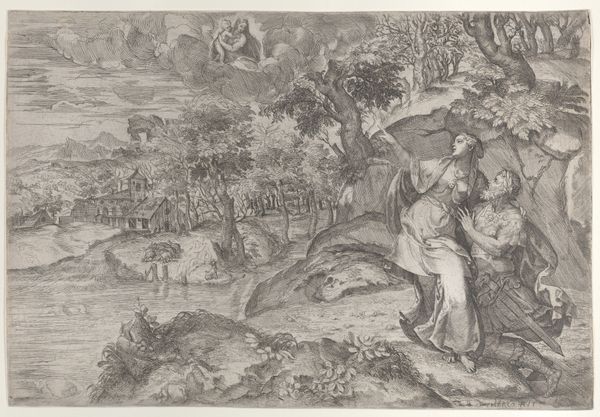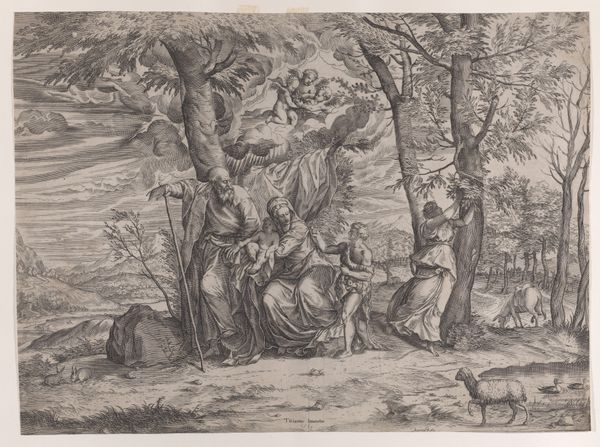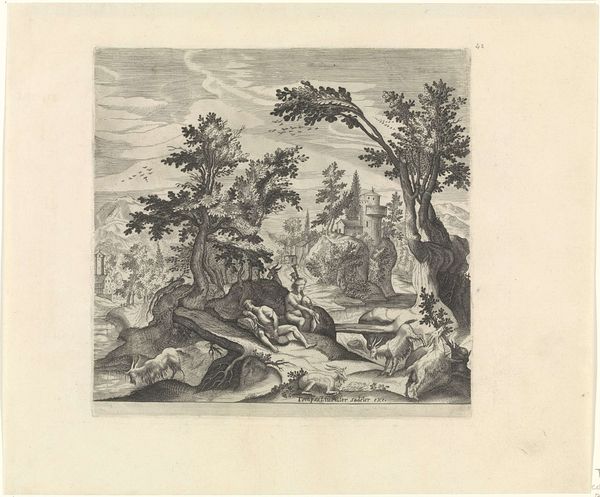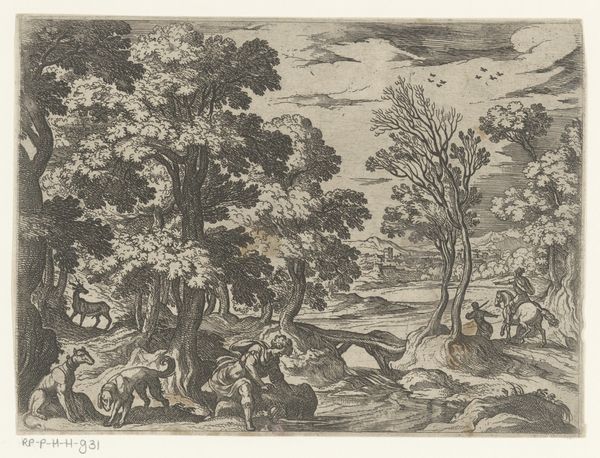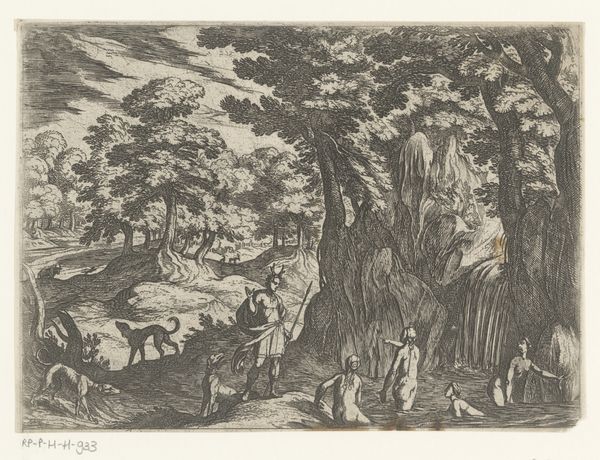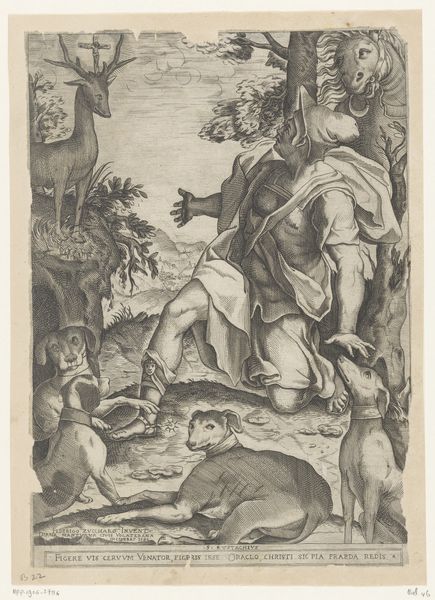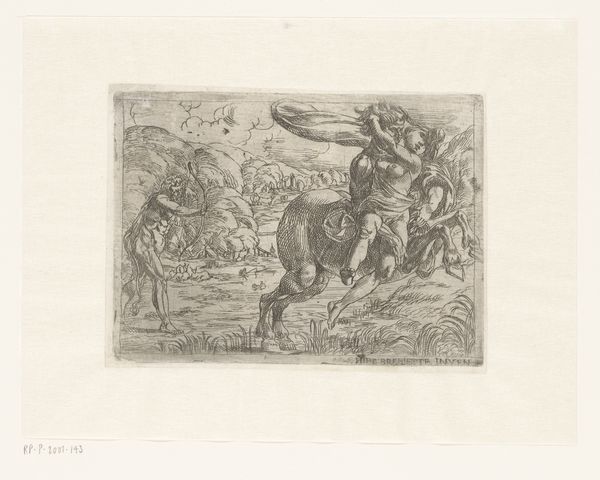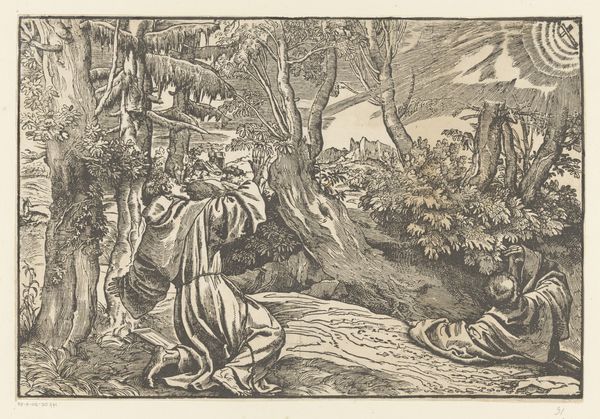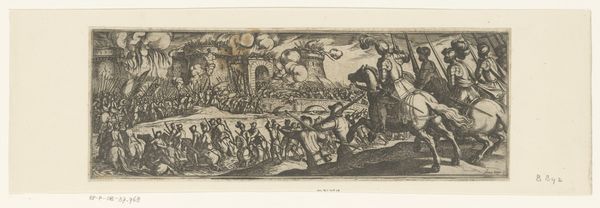
print, engraving
#
allegory
#
ink painting
# print
#
landscape
#
figuration
#
11_renaissance
#
history-painting
#
italian-renaissance
#
engraving
Dimensions: 11 5/16 x 16 3/8 in. (28.73 x 41.59 cm) (image)
Copyright: Public Domain
This print, "God Creating the Animals," was made anonymously. The technique used here is engraving, where the design is cut into a metal plate, ink is applied, and then pressed onto paper. Each line on the image is the result of skilled labor. The artist used specialized tools to meticulously carve the image into the metal, showing deep knowledge of the material properties of metal and ink. The dense and intricate details create a rich scene, inviting us to consider the amount of time and effort involved in its production. In a way, the print mirrors the act of creation it depicts, reflecting the labor involved in bringing forth the artwork from raw materials. Prints like this were often made in multiples, making images and ideas accessible to a wider audience, contributing to a visual culture beyond the elite. Appreciating the material and process behind this artwork allows us to understand the artistic intentions, and broader social and cultural context it inhabits.
Comments
minneapolisinstituteofart about 2 years ago
⋮
In 16th-century Europe, the natural world was interpreted largely in terms of God's creation. It was also the Age of Exploration, which sparked interest in exotic specimens. Here the earth produces "living creatures of every kind" (Genesis 1:24), even, apparently, a unicorn. This print was inspired by Raphael's design for a Vatican loggia (1518-19), where it symbolized the far reaches of Leo X's papacy. This more naïvely rendered image seems to show the animals still adjusting to their materialization.
Join the conversation
Join millions of artists and users on Artera today and experience the ultimate creative platform.
